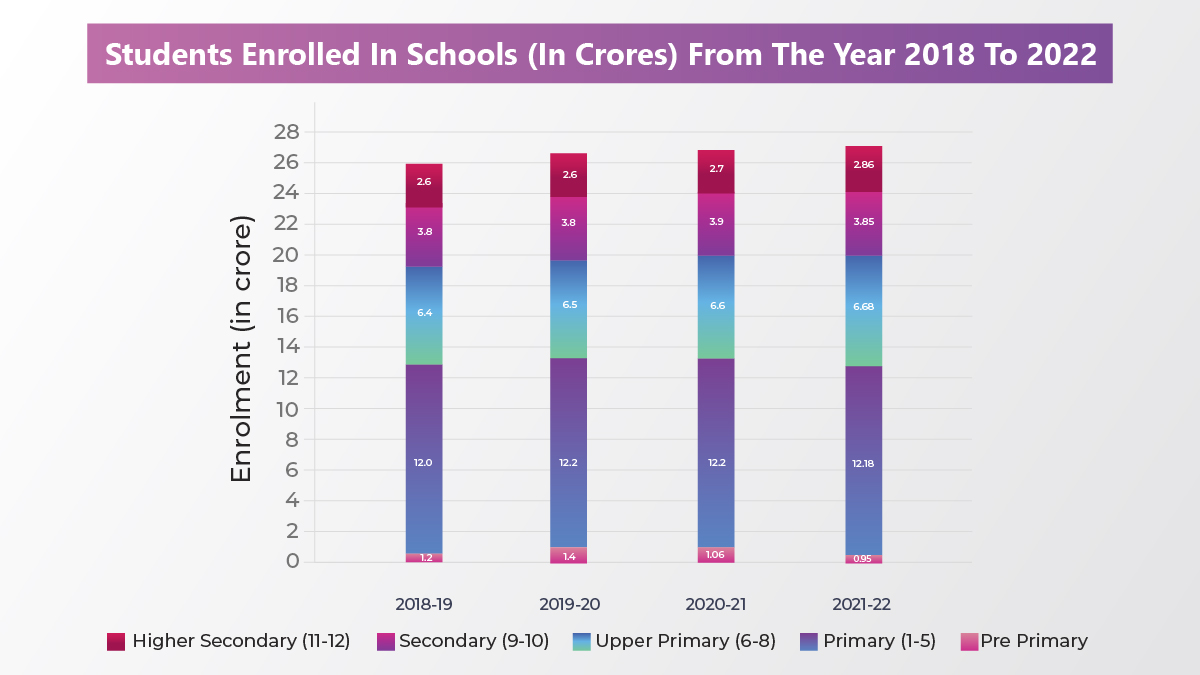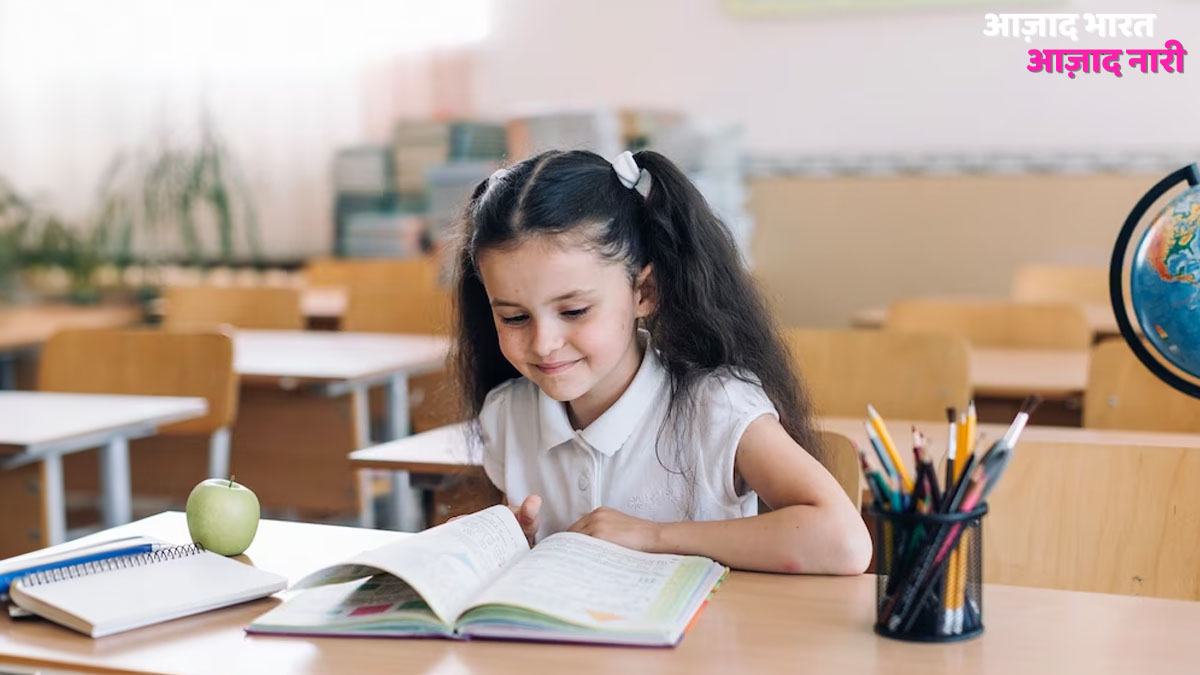Girl education in India has come a long way since independence, but the reality is it still faces many challenges. In rural areas, many families still view girls as a financial burden and prioritise boys’ education. However, the education system for girls in India is still facing several challenges that need to be addressed to ensure that all girls have access to quality education.
If we imagine an independent India, we can question if men and women have the same rights in education. Are the daughters of our country educated? Do all the daughters enjoy the same rights as the sons? Do girls always have the same educational benefits and are their skills acknowledged in various fields? There are several questions, and the search for solutions is still ongoing.
Right To Education Act In India
The Right to Education Act 2009 was enacted by the Parliament of India on August 4, 2009, and came into effect on April 1, 2010. Article 21(A) of the Indian Constitution explains the importance of free and mandatory education for children aged 6-14 in India.
Article 21(A) of the Constitution of India states that “The State shall provide free and compulsory education to all the children of the age of six to fourteen years in such a manner as the state may, by law, determine.”
Promoting girl's education has the power to change communities, nations, and the entire planet. Every girl has the right to an education if she is capable of receiving one. She is capable of supporting her family and obtaining their livelihood. By obtaining a higher education, she can develop into a responsible adult and improve the future of her family and the coming generations.
In India, women are still fighting for the right to seek an education. Take a look at what the statistics show on the balance of education between men and women.
Students Enrolled In Schools From The Year 2018 To 2022

If we talk about the statistics, in the year 2018-19, the total number of students enrolled in pre-primary was 1.2 crores, which increased to 1.4 crores in 2019-2020, whereas in the year 2021-2022, there was a slight decline and this number remained 0.95 crore. On the other hand, when we talk about primary education, it increased from 12.8 crore in the year 2018-19 to 12.18 crore in the year 2021-22.
In secondary education it increased from 6.4 crore in the year 2018-19 to 6.68 crore in 2021-22. Similarly, when it comes to higher education, this figure increased from 2.6 crore to 2.86 crore. As per the UDISE+ report, there has been an increase of 0.76% in schools in 2021-22 as compared to 2020-21.
While these figures show the progress we have made in the field of education, now as we are entering our 77th year of independence and progress is being made everywhere, there is a question of whether a developing India can be called a developed India.
Number Of Girls And Boys Enrolled In Schools From The Year 2018 To 2022

The number of boys enrolled for primary education in the year 2018-19 was 6.3 crore, while in the same year, the number of girls was 5.8 crore. Similarly, if we talk about higher secondary, then in the year 2021-22 boys were 1.5 crore while girls were 1.4 crore.
If we talk about the last year, the total enrollment from primary to higher secondary level of school education in 2021-22 was a little over 25.57 crore, in which only the enrollment of boys was 13.28 crores and the enrollment of girls was 12.28 crores.
Although this figure was an increase of more than 19 lakhs as compared to 2020-21, the number of girls is still less than that of boys. The total number of boys enrolled in higher secondary school education has increased from 1.3 crore in the year 2018 to 1.5 crore in the year 2021-22.
Number Of Teachers In India (Year 2018-19, 2019-20 and 2020-21)

When we talk about statistics, the number of female teachers in educational institutions is more than male teachers. While there were 47.1 lakh women teachers in schools in the year 2018-19, this figure increased to 48.77 lakh in the year 2021-22.
However, there were 47.2 lakh male teachers in 2018-19, whose number has come down to 46.3 lakh in 2021-22. The participation of women in teaching is higher than that of men. However, beyond the upper primary level, the number of male teachers still outnumbers that of females.
Don't miss: Aazaad Bharat Aazaad Naari: Assessing The Current Landscape Of Women In Politics And Bureaucracy
What Challenges Do Girls Face In Getting Education?
One major challenge is the lack of school infrastructure in many parts of the country. Many schools do not have proper facilities like safe drinking water, toilets, and classrooms. This seriously affects the education of girls since they may feel unsafe or uncomfortable attending school in such conditions.
Another challenge is the cultural mindset surrounding girls and their education. Some families still do not prioritise girls' education and believe that girls should be married off as soon as possible. This mindset can prevent parents from sending their daughters to school, even if it is available to them
Poverty is another significant obstacle to girls' education in India, particularly in rural areas. Girls and their families often face poverty issues, including the inability to pay school fees, and inadequate nutritional and health care provision that interferes with girls' education.
Why Is It Important For A Girl Child To Be Educated?
Each perspective on education that aims to increase knowledge and experience is influenced by educating the girl child. Education for girls boosts economies and lowers inequality. It helps create more secure, resilient communities where everyone has the chance to reach their full potential, including boys and men. It will strengthen economies and reduce inequality. A child's whole growth is greatly influenced by its parents. Parenting is a constantly evolving process that extends beyond providing a child's basic needs for care and development. By prioritising their education, instilling a positive attitude towards education, and staying involved in their academic progress, parents can help pave the way for their daughters' academic success and empowerment.
There have been many initiatives and policies implemented to promote girls' education by the government of India. With continued investment in education and increased awareness of the importance of educating girls, it is possible to bridge the gaps and promote gender equality in education in India.
For more such stories, stay tuned to HerZindagi.
Information Sources:
https://dsel.education.gov.in/rte
https://www.right-to-education.org
